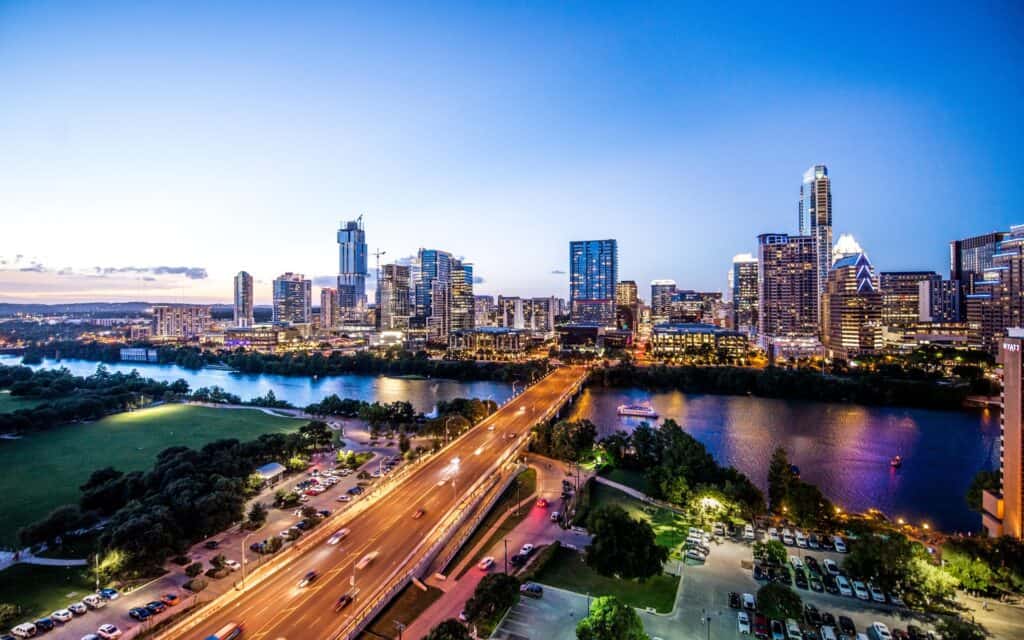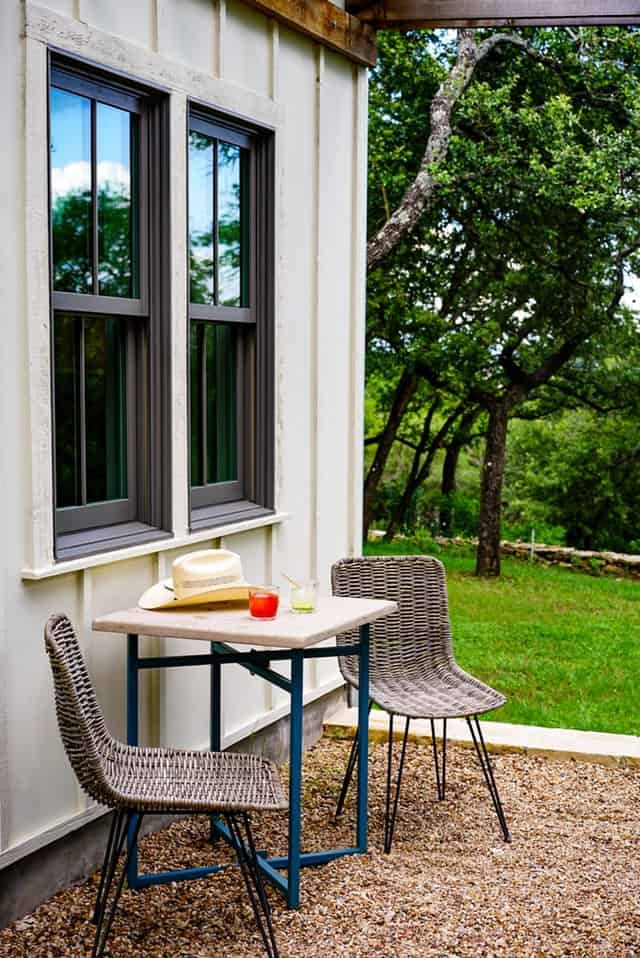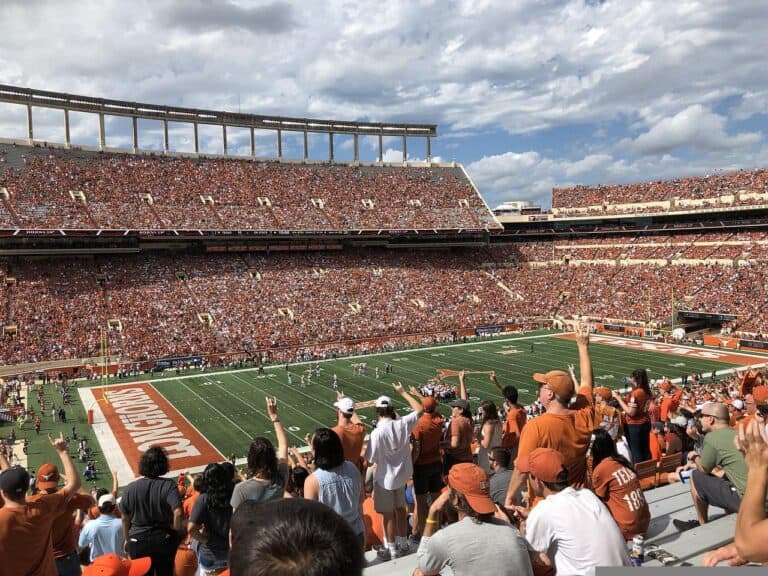
Austin was the fastest-growing large U.S. metro in the last decade. The value of real estate there has appreciated so much, Hostaway included it in its top 10 list of rental arbitrage markets for Airbnb in 2022. Isn’t it time you seriously considered investing in short-term rentals in Austin, Tx?
Consider these stellar stats:
The factors that made Austin a “migration magnet” for new residents in 2021, according to real estate brokerage company Zillow, were a booming economy, record low mortgage rates, sunny weather, and large, family-sized, relatively affordable homes.
So if you’re wondering how you can jump into the Texan real estate boom, consider investing in Austin short-term rentals now.
People are flocking in by the droves, the population is surging, and investments are at an all-time high. Visitors and would-be residents are looking for furnished short-term rentals of every shape, size, and value.
And it’s a great time to get a piece of the real estate pie because profitability is high.
According to Mashvisor, return on investment for both long and short-term rental properties in Austin exceeds the cap rate and cash-on-cash return in many other prime investment locations across the US.
Investing in Airbnbs generates an average income of $3,430 and a cap rate of 3.0%. That’s only the city-wide average; higher rates can be found in the best neighborhoods of Austin.
The real estate data analysis company also says that STR properties will be more profitable than traditional Austin rentals, based on their study of return on investment data.
So what exactly is driving this strong demand?
The Austin metropolis is home to almost 2.3 million people. Located in Travis County, the Austin-Roundrock-Georgetown metro swelled by almost a third and added over half a million residents from 2010 to 2020. has been #1 in population growth over the past decade.
It’s estimated that 100 people move to the city every single day. But from mid-2019 to mid-2020 alone, Austin opened the door to more than 67,000 new residents. That’s around 180 migrants per day!
This burgeoning population grew even faster during the pandemic. Buyers and renters from California moved to Texas in 2020, with Austin receiving as much as 18% of the people fleeing San Francisco in the last quarter of the year.
A huge chunk is composed of young professionals whose tech jobs allow them to work remotely. In search of more affordable and livable places, they realize that the huge sums they were spending on rent or mortgages in cities like New York and San Francisco could afford bigger spaces and more conveniences in Austin.
This strong in-migration is yet another reason why the demand for housing in Austin is skyrocketing.
The city’s population jumped over 3% at the end of 2020, making it the 11th most populated city in the country today. It’s also the 2nd most populated capital city in the country next only to Phoenix, Arizona.
The New York Times says Austin has bucked the pandemic and now has the hottest job market in the country. According to the non-profit organization Austin Chamber, Metro Austin’s 2.5% decline in jobs from September 2019 to September 2020 made it the best-performing city among the country’s biggest metro areas in response to Covid-19.
Metro Austin has also reportedly regained 96% of 2020’s pandemic-related job losses. Some 77% of the leisure and hospitality jobs lost in March and April of that year have already returned.
With an employment growth rate of more than 8% from March 2021 to March 2022, the Austin metro ranks third in the U.S. for the highest job growth over the past year. Austin’s total new jobs amounted to more than 90,000 since 2021.
Unemployment is down to 2.7% as of May 2022. The city is simply abuzz with record-breaking numbers of new opportunities.
Some 35 newly located companies announced 9,790 new jobs in late 2020 – many of them in the tech industry. Another 100,000 employees are expected to head to Austin’s downtown over the next 3 years.
The city is already home to huge tech companies like Facebook, Google, IBM, AT&T, Dell, Cisco,and Cirrus Logic. But over the past 5 years, it’s officially become a new hub for tech corporations, big and small.
The following giants have moved their headquarters or are currently expanding in Austin, earning the city the nickname ‘Silicon Hills’ and ‘Silicon Prairie’:
There are over 3,300 tech companies in the region, and many of their employees are competing for homes in the Austin real estate market. Other industries keeping the city’s economy strong – and the housing demand high – are fintech, manufacturing, health care, biotech, and pharmaceutical industries. Austin has long been home to household brands such as 3M, Home Depot, Whole Foods, eBay, and even Vrbo.
This ever-growing job market is attracting a well-educated and highly paid workforce that can afford more expensive products and services, and are very willing to pay.
Austin’s median family income grew 11.5% in the past year. It’s now at $110,300, up from $98,900 in 2021. That’s good news for property owners because it means they can charge higher for rent.
Owing to its good food, great music, and laid-back culture, this sunny city has become a migration magnet of sorts — attracting millennials and young families, in particular.
The city ranks among the top 5 cities in the US where Millenials are moving. In 2019 it welcomed some 5,686 Millennial migrants from out of state. Gen Y now makes up 31.3% of Austin’s population. They seem to echo the city’s slogan, “Keep Austin Weird”, which is reflective of Austin’s youthful, creative vibe.
For 3 consecutive years starting in 2016, the US News and World Report ranked Austin the No. 1 best place to live based on affordability, job prospects, and quality of life.
In 2022, the city made it to Niche.com’s top 25 list of best cities to live in America. The website gave it an “A” for its diversity, nightlife, good public schools, suitability for families, and a plethora of restaurants, bars, coffee shops, and parks. The iconic 6th Street has over 60 bars so there’s more than enough good food and live music to enjoy on any given night.
There are always exciting things to do and places to see: music festivals, tech shows, motorsports, Hill Country wine tastings, football games, paddle boarding, shopping, museums, and the arts. Folks who love sunny weather will take to Austin very well, as the climate is humid subtropical with very long and hot summers and short, mild winters.
Nature lovers will be happy to find the metro surrounded by lakes, rivers, and the great outdoors. Austin’s Parks and Recreation Department maintains 300 parks, over 18,000 acres of green space, and 227 miles of trails.
And to top it all off, Texas is tax- and landlord-friendly. The government charges no personal income tax and no real estate tax at the state level. That makes life generally easier and more desirable for most Texans – both those working, retiring, and investing in a business.
The average Airbnb occupancy rate in Austin ranges from 23% to 80%.
Because demand for rental housing far outweighs the inventory, what few rental properties are available are quickly being lapped up.
In 2021, over 40,000 homes were sold in Austin. Mashvisor says the demand for real estate has grown by 2.5% since 2020. Around 18,000 new houses were built at the start of 2021. But while construction is breaking records, so does demand. The number of closings – homes that were finished and sold – grew by 15% from the previous year.

Austin’s housing market has been in a frenzy for years, backed by a strong and quickly expanding economy. In July 2021, Curbed reported about a home that received 96 offers in one weekend and was sold for $850,000 above the listing price – within 4 days.
In June 2022, the median listing price for a home in Austin was $620,000, up nearly 19% year over year. Home values have increased by 32.4%.
More than 30 million tourists visit Austin each year, generating some $8.7 billion in revenue. The city is known as the “Live Music Capital of the World”. It boasts the world-famous South by Southwest (SXSW) music, film, and media festival, as well as the Austin City Limits Music Festival. With over 250 music venues playing rock, blues, jazz, country, hip hop nightly, music lovers can never spend a dull evening in this lively city.
Additionally, Austin is home to the Formula 1 Grand Prix race, the MotoGP, and the FIA World Rallycross races.
Visitors are always in search of a place to stay in Austin, so short-term rental hosts find their properties booked most of the year. In 2020, Airbnb hosts in Austin made average annual earnings of $22,351. That increased significantly in 2021 when hosts made an average of $74,241. Which made Austin the second US city with the highest average host earning, next only to San Diego, California).

But before you consider investing in property to rent out on a short-term basis, study the Airbnb ordinance imposed by the city government a few years back. It puts limits and restrictions on occupancy, the distance between STR units, and advertising. City rules also prohibit short-term renting of single-family homes and duplexes in residential areas by April 2022.
What you could do is invest in single or multi-family homes in non-residential areas with no Airbnb restrictions. Alternatively, you could buy a duplex, live in one of the units, and rent out the other. Those could be the most viable investment strategies you could use for short-term renting in Austin.
Visit www.austintexas.gov/str to keep updated on rules and requirements for operating Airbnbs there.
Many real estate analysts project Austin to remain strong, with or without Covid-19. The population, local economy, and other demographic and geographic factors all contribute to making the Texan capital a safe and profitable place to invest in short-term rentals.
If you’re thinking of capitalizing on the post-pandemic travel and relocation boom, Austin is the boomtown for you. The market is on a growth spurt, and now is a great time to jump in. Experts see it as a budding city with all the makings of the next Seattle, Portland, or San Francisco.
Once you make your investment, allow our partner company, Cohostit, to help with the property management. It provides turnkey management from marketing to cleaner scheduling, and from security to issue resolutions. Click here to book a call.